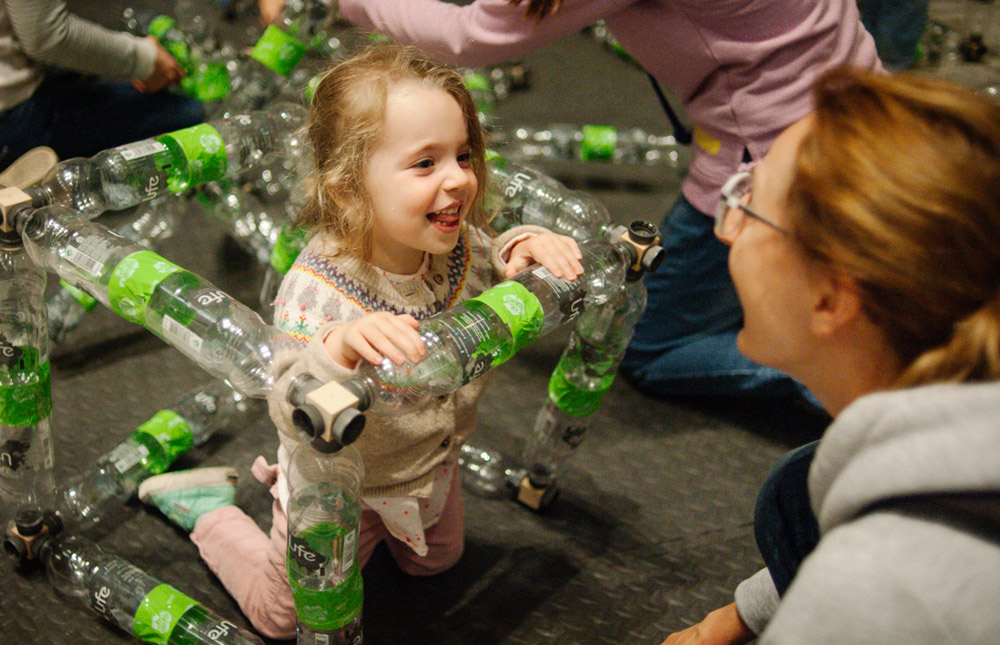
In my previous post I touched on the notion of being ‘seriously playful’: a phrase that comes up time and again in our approach to the Museum of Childhood development. Play has been described by Maria Montessori – Italian physician and educator whose eponymous pedagogic methods fundamentally influenced the field of early years education – as ‘the work of the child’ and more recently by Alison Gopnik as ‘the signature of childhood’. Developmental psychology tells us that play is a critical foundation for learning – if not, indeed, THE critical foundation. It is how as babies we learn to connect with others, explore cause and effect, and understand how we can have impact on the world, that we can affect change.
In the brilliantly titled ‘Einstein Never Used Flashcards’, Kathy Hirsh-Pasek and Roberta Michnick Golinkoff explore and expound on the critical role of play in language development. In essence, to play is to become fully human. The ludic and pedagogic potential of play is an area we are exploring in depth as we embark on content development sprints this month and next. There’s a tremendous energy in this project as it gathers momentum with new contributors and activities aplenty. In January we welcomed James Peto from the Wellcome Collection as our VARI Visiting Professor of Play. In late February I will be travelling to Pretoria, South Africa, to speak on a panel on play and creativity in education for the Africa Play global conference, while in March we will partner on a roundtable on play and design with the All Party Parliamentary Groups for Design and Innovation (APDIG) and Assistive Technologies. More on these in future posts.
Our narrative on play takes a design perspective. In this, play is a mode of creative problem-solving and experimentation that starts with the imagination and tries ideas and things out for size. In a talk last week by Peto, he explored how the designerly origins of play and design can be traced to the work of Frederick Froebel. Froebel founded the kindergarten movement in Germany in 1837 by opening his own – and the first – school for children under 7. This act both recognised the value of explorative and outdoor play from the early years onwards and created a radically new approach to and understanding of the role of play developmentally. Let’s expect to hear more on Froebel as the Play gallery takes shape in the coming months.
Thinking of play as an open-ended behaviour enables our galleries to be in ‘beta’ mode, in a space in which we can imagine and consider outlandish and unprecedented ideas and possibilities for what the new incarnation of the V&A in Bethnal Green might be. Our fit-out design team AoC (which aptly stands for Agents of Change) advocate this approach across our gallery content sprints. AoC invite us to come to them not with solutions but with rich content ideas and stories woven across the new galleries, elements of which will be co-designed with audiences.
Just as Gopnik has described early childhood as being the ‘R&D department of the human species – the blue sky guys, the brain-stormers’, so too we are exploring ‘how might we’ harness the incredible richness of the V&A collection to build creative confidence with future generations. In this mode, opening up and activating the collection to tell new stories is the backbone of the curatorial approach. So in my next post I will reflect on the role of museums as story makers, and what this looks like from a ‘designerly’ perspective.


